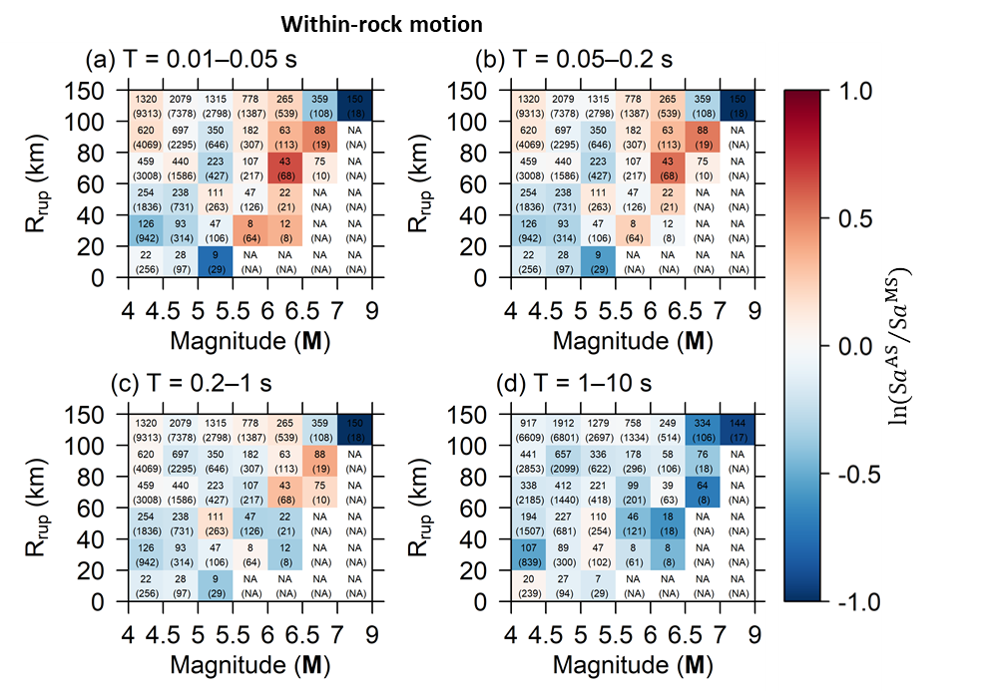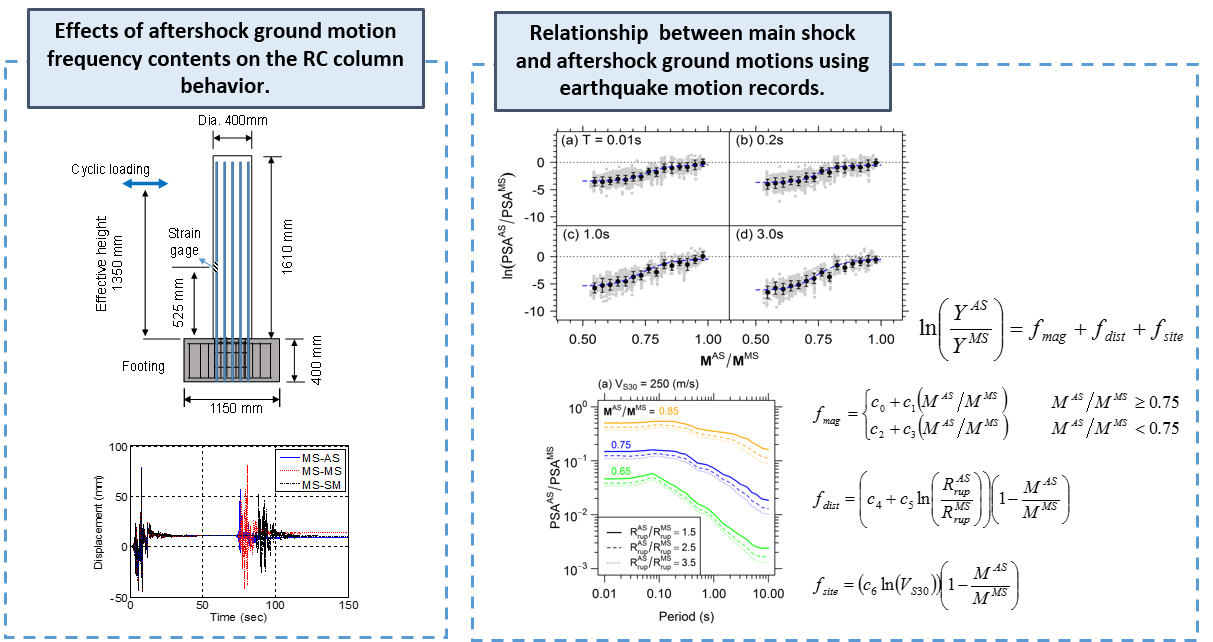Aftershock Ground Motion Prediction
Related articles:
Hyejin Lee, and Heon-Joon Park, and Byungmin Kim* (2020), Differences between main shock and aftershock ground motions derived from the Japanese KiK-net database, Soil Dynamics and Earthquake Engineering, v138
Moochul Shin and Byungmin Kim*, Effects of Frequency Contents of Aftershock Ground Motions on Reinforced Concrete (RC) Bridge Columns, Soil Dynamics and Earthquake Engineering, v97, 48-59
Byungmin Kim and Moochul Shin (2017), A model for estimating horizontal aftershock ground motions for active crustal regions, Soil Dynamics and Earthquake Engineering, v92, 165-175
Using the KiK-net database, we found that aftershock ground motions differ from main shock ground motions given the similar ranges of earthquake magnitude and source-to-site distance. The ratio between main shock and aftershock ground motion is dependent on earthquake magnitude and source-to-site distance.

It has been well recognized that reinforced concrete (RC) columns damaged by a sizeable main shock event become more vulnerable to following aftershocks. Therefore, it is essential to use proper main shock-aftershock sequential ground motions in seismic analyses to ensure the safety and integrity of infrastructure. I participated in the research demonstrating the effects aftershock frequency contents on the seismic responses of RC columns using finite element analyses. For the cases where aftershock ground motions are not available (i.e., forward prediction), We developed an empirical model for predicting aftershock ground motions for active crustal regions using measured main shock-aftershock ground motion pairs This can provide guidance for selecting aftershock ground motions when analyzing the behavior of structures subject to main shock-aftershock sequences.
